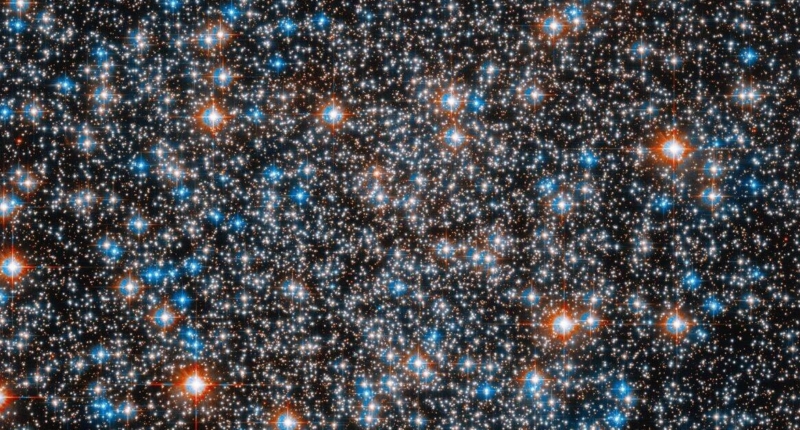NASA’s James Webb Space Telescope recently captured a stunning image of Messier 55, a big and bright globular cluster located approximately 20,000 light-years away from Earth. Messier 55 is a loose swarm of stars that lacks a dense core, making it challenging to locate from Earth, particularly for observers in Northern locations. However, the cluster can be observed through binoculars and telescopes, which can reveal some of the individual stars and even low-magnitude stars with larger apertures. The cluster contains approximately 100,000 stars, among which 55 are variable stars that display changes in brightness. Despite its challenging observation, Messier 55 is a fascinating celestial object worth exploring.
Discover Messier 55, the Globular Cluster Captured by NASA’s Webb Telescope
NASA’s James Webb Space Telescope has recently captured a spectacular image of Messier 55, a part of the globular cluster with the same name. Also known as NGC 6809, Messier 55 is a big and bright cluster that belongs to the Sagittarius constellation and is located approximately 20,000 light-years away from Earth.
Globular clusters are stable swarms of stars, which hold tens of thousands or even millions of stars together due to their mutual gravitational attraction. They are often much larger than open clusters and have a regular spherical shape because of their strong, mutual gravitational attraction. According to astronomer Abbe Nicholas Louis de la Caille’s book, Illustrated Guide to Astronomical Wonders, Messier 55 was discovered and catalogued on June 15, 1752. However, Charles Messier, after whom Messier objects like M 55 are named, had a hard time locating it because the cluster lacks a dense core, and many of its stars are quite faint.
Despite its size and brightness, Messier 55 can be hard to locate from Earth. The cluster sits low in the sky, particularly for observers in Northern locations, making it obscured by a thicker layer of the atmosphere, along with water vapor and light pollution. When Messier cataloged it on July 24, 1778, he wrote that “its light is even and does not appear to contain any star.”
In the recently captured image, Messier 55 may not look like a typical globular cluster because it is zoomed in on one particular portion of the cluster. The cluster as a whole appears spherical due to the mutual attraction of its stars. The cluster has a diameter of about 100 light-years and contains approximately 100,000 stars, among which, 55 are variable stars whose brightness changes.
In summary, Messier 55 is a beautiful globular cluster captured by NASA’s James Webb Space Telescope. This cluster, which belongs to the Sagittarius constellation and is approximately 20,000 light-years away from Earth, is a big, bright, and extremely loose swarm of stars that lack a dense core. Despite its size and brightness, the cluster can be challenging to locate due to its low position in the sky, along with atmospheric and light pollution. Nevertheless, Messier 55 is a fascinating celestial object that contains thousands of stars, among which 55 are variable stars that display changes in brightness.
Observing Messier 55
If you have clear skies with low pollution, you can observe Messier 55 through binoculars as a hazy round patch. Small telescopes can resolve some individual stars in the cluster, while larger telescopes with larger apertures can reveal even low-magnitude stars with ease.
Don’t miss interesting posts on Famousbio










